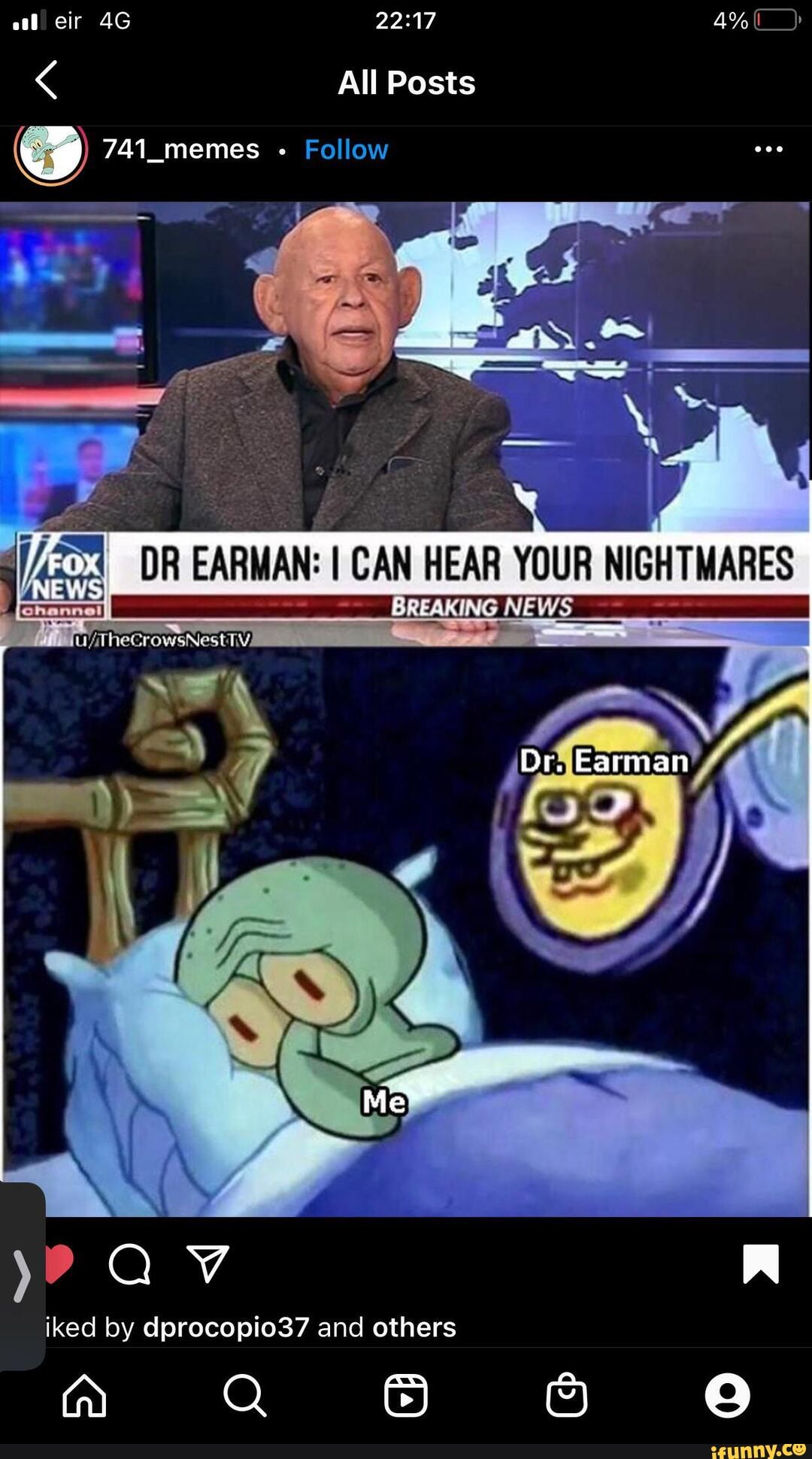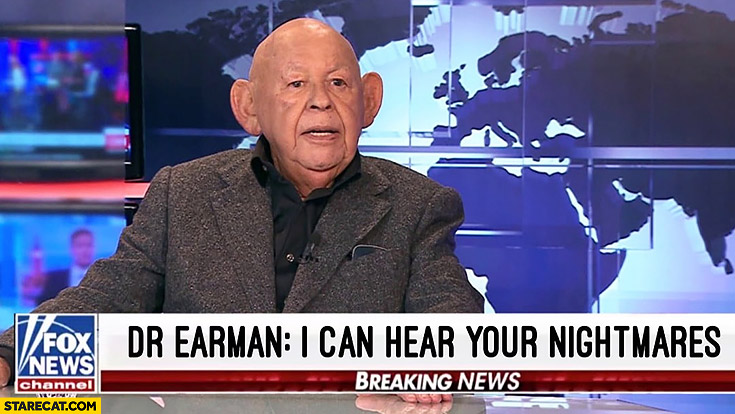
#DR EARMAN MEME HOW TO#
Second, guidelines are given for how to avoid forms of type‐two scientific misconduct, in particular, putting forward falsely negative conclusions about the scientific quality of someone else's work in an emotional outburst. A distinction is made between type‐one and type‐two scientific misconduct – the former serves a self‐interest, while the latter serves to discredit others – and first guidelines are given for how to apply widely accepted principles of good scientific practice to avoid forms of type‐one scientific misconduct like (self‐)plagiarism and meddling with data. That being said, the main aim of this chapter is to give guidelines for how to avoid committing scientific misconduct. What is important in this context is that scientific misconduct doesn't have to be intentional: one can unintentionally end up being found guilty of scientific misconduct.

To maintain a minimum standard of quality in science, it is an imperative in scientific writing that one avoids committing scientific misconduct. Knowledge of the "tell-tale signs of pseudoscepticism" can be of great use in the differentiation between the true and the false scepticism. After the publication of the Special Dossier "Scientific Evidence for Homeopathy" in Brazil (2017), pseudosceptics made unfounded and fallacious criticisms of it in the media and social networks, in which the use of these pseudosceptical and pseudoscientific strategies to undermine the vast body of evidence presented is clearly demonstrating. In unmasking these impostors, Marcelo Truzzi and Marcoen Cabbolet describe several "tell-tale signs" through which the conduct of these pseudosceptics disguised as pseudoscientists can be notably recognized.
#DR EARMAN MEME FREE#
In fact, this posture defines them as "pseudosceptics", because the true sceptic doubts, investigates and accepts the existing evidence with an agnostic and neutral posture, with an open mind and free from prejudice. Homeopathy is often attacked in several countries by groups of individuals who call themselves "sceptics", who autocratically and systematically disparage and deny any scientific evidence which underlies the homeopathic model. Keywords: anomalous experience, empiricism, paranormal belief, probability, survival The equation that led to our verdict can also purposefully guide future research, which one day might finally resolve this enduring question scientifically. People with documented experiences under conditions that overcome the known confounds thus arguably meet the legal requirements for expert witness testimony. Thus, we concluded that popular skeptical explanations are presently insufficient to explain a sizable portion of the purported evidence in favor of survival. The mathematical analysis found that known confounds did not account for 39% of survival-related phenomena that appear to attest directly to human consciousness continuing in some form after bodily death. This study therefore featured two researchers with opposite views, who jointly gathered hundreds of research studies to evaluate the maximum average percentage effect that seemingly supports (i.e., anomalous effects) or refutes (i.e., known confounds) the survival hypothesis. The idea of ‘life after death’ transcends philosophy or religion, as science can test predictions from claims by both its advocates and skeptics.

Recommendations for educative and punitive measures are given to prevent and to deal with these three forms of scientific misconduct. It is argued that this may be an emotional response, rather than a calculated strategic action. The central issue is pseudoskepticism: uttering negative conclusions about someone else's work that are downright false. These concern the improper ways how challenges of the prevailing opinion are thwarted in the modern world. The focus is then on the latter type, and three known issues are identified as specific forms of such scientific misconduct: biased quality assessment, smear, and officially condoning scientific misconduct. This paper, however, proposes to distinguish between two types of scientific misconduct: 'type one scientific misconduct' is self-serving and leads to falsely positive conclusions about one's own work, while 'type two scientific misconduct' is other-harming and leads to falsely negative conclusions about someone else's work. Scientific misconduct is usually assumed to be self-serving.


 0 kommentar(er)
0 kommentar(er)
